Speaker Biographies
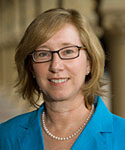
Sally M. Benson
Director
Global Climate and Energy Project
Professor (Research)
Energy Resources Engineering Department, Stanford University
Sally M. Benson is a professor (research) in the Department of Energy Resources Engineering (ERE) in the School of Earth Sciences, Stanford University. She is also the director of the Global Climate and Energy Project (GCEP) at Stanford. Her research group in ERE investigates fundamental characteristics of carbon-dioxide storage in geologic formations as a means of climate-change mitigation. Benson teaches courses on carbon-dioxide capture and storage and greenhouse gas mitigation technologies. A groundwater hydrologist and reservoir engineer, she has conducted research to address a range of issues related to energy and the environment. Prior to joining GCEP, Benson worked at Lawrence Berkeley National Laboratory (LBNL), serving in a number of capacities, including Division Director for Earth Sciences, Associate Laboratory Director for Energy Sciences, and Deputy Director for Operations. For the past 10 years, she has studied how to reduce greenhouse gas emissions by capturing carbon dioxide from power plants and pumping it into deep underground formations for permanent sequestration. Her research interests also include technologies and energy systems for a low-carbon future, groundwater quality and remediation, biogeochemistry of selenium, and geotechnical instrumentation for subsurface characterization and monitoring. Benson was a coordinating lead author on the influential 2005 Intergovernmental Panel on Climate Change (IPCC) Special Report on Carbon Dioxide Capture and Storage. Benson graduated from Barnard College at Columbia University in 1977 with a bachelor’s degree in geology. She completed her graduate education in 1988 at the University of California, Berkeley, after receiving master’s and doctoral degrees, both in materials science and mineral engineering. The author or co-author of over 160 scientific publications, Benson is a member of the Society of Petroleum Engineers, American Geophysical Union, the American Association for the Advancement of Science, and the American Association of Petroleum Geologists.
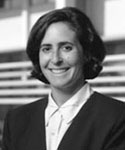
Stacey Bent
Associate Chair
Chemical Engineering Department, Stanford University
Bent received her B.S. degree in Chemical Engineering from the University of California, Berkeley, in 1987. She attended graduate school as a National Science Foundation Predoctoral Fellow at Stanford University, earning her Ph.D. in Chemistry under Richard Zare in 1992. During graduate school, Bent enjoyed several research opportunities at AT&T Bell Laboratories under their Graduate Research Program for Women, where she worked with John Tully and Mark Cardillo on gas-surface scattering, and with Alex Harris on sum-frequency generation measurements of surface vibrational energy relaxation. In 1992, Bent joined AT&T Bell Laboratories at Murray Hill, New Jersey, as a postdoctoral fellow working with William Wilson on ultrafast laser spectroscopy of electroluminescent materials engineered using molecular self-assembly. In 1994, Bent joined the faculty as an Assistant Professor in the Department of Chemistry at New York University. In 1998, she moved to Stanford University, where she is currently an Assistant Professor of Chemical Engineering. At Stanford, Bent also holds courtesy faculty appointments in the Department of Chemistry and the Department of Electrical Engineering. Bent has been the recipient of a National Science Foundation CAREER Award, the Beckman Young Investigator Award, a Camille Dreyfus Teacher-Scholar Award, a Cottrell Scholar Award from the Research Corporation, and a Terman Faculty Fellowship from Stanford University. Bent is a member of the executive committee of the AVS Surface Science Division and is Program Chair-Elect of SSD for the 2002 national meeting. She is also a member of the Program Committee for the 2001 International Vacuum Congress (lVC-I5) Symposium.
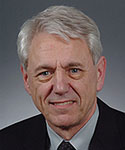
George W. Crabtree
Director
Materials Science Division, Argonne National Laboratory
Crabtree is director of Argonne’s Materials Science Division and holds the title of Argonne Distinguished Fellow, the laboratory’s highest scientific and engineering rank. The title, held by fewer than 30 Argonne employees, is comparable in stature to an endowed chair at a top-ranked university and recognizes exceptional contributions in a person's field. Crabtree is a noted expert in the field of superconductive materials. He has won numerous awards for his pioneering research in the field, and his work has been frequently cited by other researchers. He holds a Ph.D. degree in Condensed Matter Physics from University of Illinois at Chicago, an M.S. degree in Solid State Physics from the University of Washington, and a B.S. degree in Science Engineering from Northwestern University.
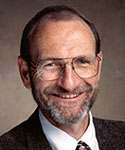
Chris Field
Director
Department of Global Energy, Carnegie Institute of Washington
Chris Field is the founding director of the Carnegie Institution's Department of Global Ecology, Professor of Biology and Environmental Earth System Science at Stanford University, and Faculty Director of Stanford's Jasper Ridge Biological Preserve. The author of more than 200 scientific publications, Field’s research emphasizes impacts of climate change, from the molecular to the global scale. His work includes major field experiments on responses of California grassland to multi-factor global change, integrative studies on the global carbon cycle, and assessments of impacts of climate change on agriculture. Field’s work with models includes studies on the global distribution of carbon sources and sinks, and studies on environmental consequences of expanding biomass energy. Field has served on many national and international committees related to global ecology and climate change. He was a coordinating lead author for the fourth assessment report of the Intergovernmental Panel on Climate Change. In September, 2008, he was elected co-chair of working group 2 of the IPCC, and will lead the next assessment on climate change impacts, adaptation, and vulnerability. Field has testified before House and Senate committees and has appeared on media from NPR “Science Friday” to BBC “Your World Today.” He is a member of the US National Academy of Sciences. Field received his PhD from Stanford in 1981 and has been at the Carnegie Institution for Science since 1984.
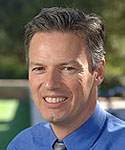
Martin Fischer
Associate Professor
Civil and Environmental Engineering, Stanford University
Director
Center for Integrated Facility Engineering
Professor Fischer's research goals are to improve the productivity of project teams involved in designing, building, and operating facilities and to enhance the sustainability of the built environment. He graduated from the Swiss Federal Institute of Technology with a Diploma in Civil Engineering in 1984 and received his M.S. in Industrial Engineering: Engineering Management from Stanford University in 1987. He received his Ph.D. in Civil Engineering in 1991 from Stanford University and is now Associate Professor of Civil and Environmental Engineering at Stanford University. His work develops the theoretical foundations and applications for virtual design and construction (VDC). VDC methods support the design of a facility and its delivery process and help reduce the costs and maximize the value over its lifecycle. His research has been used by many small and large industrial government organizations around the world and he has received numerous awards and honors for his work.
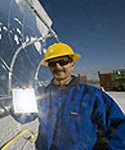
Keith Gawlik
Senior Engineer
Ph.D., Mechanical Engineering, University of Colorado at Boulder
B.S. and M.S. Mechanical Engineering, Massachusetts Institute of Technology
Keith joined NREL in 1992, and is a member of NREL's concentrating solar power research team. His work has included the following: experimental and numerical analysis of the fluid-flow and heat-transfer performance of transpired solar air heaters, geothermal binary-cycle power plants, enhanced heat-transfer surfaces, corrosion-barrier polymer coatings, heat sinks for electronics modules, photocatalytic oxidizers, polymer heat exchangers, natural convection cooling towers, solar domestic hot-water systems, building HVAC systems, and hydrogen venting systems. His work in the CSP program is in optical-efficiency testing of parabolic trough systems. He has received R&D100 and Federal Laboratory Consortium for Technology Transfer awards related to his work on polymer coatings. He is co-inventor on one patent related to the transpired collector, one on an enhanced heat-transfer surface, and two on chemical application systems—the latter two from his experience as a mechanical engineer at a company designing and manufacturing water-analysis equipment.
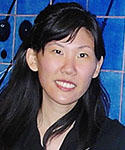
Wendy Li-Wen Mao
Assistant Professor
Geological and Environmental Sciences
Wendy Mao received her B.S. in 1998, in Materials Science and Engineering, from Massachusetts Institute of Technology. She received her Ph.D. in 2005, in Geophysical Sciences from the University of Chicago. Her research interests are high-pressure geophysics, geochemistry, and petrology; volatiles in planetary systems and hydrogen storage applications; and experimental mineral physics. She has been awarded the J.R. Oppenheimer Fellowship, 2005-2007; Rosalind Franklin Young Investigator Award, 2006; Mineral and Rock Physics Group Student Research Award, 2006; and Phi Beta Kappa at Massachusetts Institute of Technology, 1994-1998. Mao was the J. R. Oppenheimer Fellow, Los Alamos National Laboratory, 2005-2007. She is an Assistant Professor, Geological and Environmental Sciences and also an Assistant Professor, Photon Science Faculty, Stanford University, 2007-present.
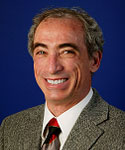
Robert T. McGrath
Deputy Laboratory Director for Science & Technology
National Renewable Energy Laboratory
Dr. Robert McGrath presently serves as Deputy Laboratory Director for Science & Technology at the National Renewable Energy Laboratory (NREL) in Golden, Colorado. In this role, he oversees NREL’s research and development portfolio which includes the National Center for Photovoltaics (NCPV), the National Wind Technology Center (NWTC) and the National Bioenergy Center (NBC), along with extensive programs in Transportation Technologies, Renewable Electricity, Building Efficiency, and Chemical, Biological and Material Sciences for energy applications. Prior to joining NREL, he served as Senior Vice President for Research at Ohio State University from 2004 through 2008; he served as President of the Ohio State University Research Foundation and President of the Science & Technology Campus Corporation. His academic appointments were as Professor of Materials Science and Engineering and Professor in the Department of Physics. From 1996 through 2004, McGrath worked at Penn State University where he simultaneously served as Associate Vice President for Research, Director of Interdisciplinary Programs, Director of the Marine Corps Research University, and Professor of Engineering Science. He also served on the Nuclear Engineering faculty at Penn State between 1980 and 1984. From 1981 through 1998, McGrath worked for Sandia National Labs in Albuquerque, New Mexico, where he served in various roles as researcher, program manager, and division manager supporting a variety of R&D efforts. McGrath received his Ph.D. in Nuclear Science & Engineering from the University of Michigan in 1980. He earned baccalaureate and masters degrees from Penn State Engineering Sciences (BS—1972), Physics (MS—1974), and Mathematics (MA—1975). McGrath has authored over 50 journal publications; many co-authored by the numerous graduate students, post docs or junior researchers who have worked under his mentorship. He has similarly authored over 80 published abstracts and conference presentations, in addition to numerous technical reports and seminars.
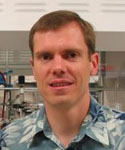
Nicholas A. Melosh
Co-Director
Stanford Program for Diamondoid Nanoscience
Assistant Professor
Engineering Department, Stanford University
Melosh's research interests include molecular electronics and plasmonics, diamondoids, dynamic self-assembly of biomolecules and lipid bilayers as nano-bio interfaces. He received his B.S. in chemistry from Harvey Mudd College in 1996; did his graduate work on block-copolymer silica composites with Brad Chmelka and Galen Stucky at the University of California at Santa Barbara, receiving a Ph.D. in materials science and engineering in 2001. His postdoctoral training was on molecular electronics and nanoscale patterning with Jim Heath at the University of California, Los Angeles and the California Institute of Technology from 2001-2003. He joined Stanford University as an assistant professor of materials science and engineering in September 2003. He is a recipient of the NSF Faculty Early Career Development (CAREER) Award and the Frederick E. Terman Fellowship. Melosh is affiliated with the Geballe Laboratory for Advanced Materials, Stanford Institute for Materials & Energy Science (SLAC), Stanford University Bio-X Program, Center for Probing the Nanoscale (NSF NSEC).
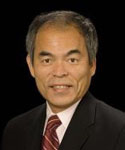
Shuji Nakamura
Director
Solid-State Lighting and Energy Center
Professor of Engineering
UC, Santa Barbara
Shuji Nakamura graduated from the University of Tokushima in 1977 with a degree in electronic engineering, and obtained a master’s degree in the same subject two years later, after which he joined the Nichia Corporation, also based in Tokushima. He was awarded a Doctor of Engineering degree from the University of Tokushima in 1994. He left Nichia Corporation in 1999 and took a position as a professor of engineering at the University of California, Santa Barbara. Nakamura was named a recipient of the 2008 Prince of Asturias Award for Technical and Scientific Research. In 2006, he was awarded Finland’s Millennium Technology Prize for his invention of revolutionary new light sources blue, green, and white light-emitting diodes and the blue laser diode.
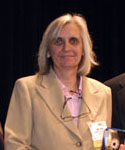
Joan Ogden
Co-Director, Hydrogen Pathways Program
Institute of Transportation Studies
Professor
Environmental Science and Policy Department, UC Davis
Joan Ogden is Associate Professor of Environmental Science and Policy at the University of California, Davis, and an Associate Energy Policy Analyst and Co-Director of the Hydrogen Pathway Program at the Institute of Transportation Studies (ITS-Davis). Her primary research interest is technical and economic assessment of new energy technologies, especially in the areas of alternative fuels, fuel cells, renewable energy, and energy conservation. She has written extensively on energy topics, including one book, eight book chapters, and numerous peer-reviewed journal articles and conference presentations. Ogden's interests are focused on understanding and modeling hydrogen infrastructure development and the environmental and societal impacts of large-scale use of hydrogen as a transportation fuel. She received a Ph.D. in theoretical plasma physics from the University of Maryland in 1977, with a specialization in numerical simulation techniques. An interest in broader energy questions led her to Princeton University, where she was a research scientist at Princeton University’s Center for Energy and Environmental Studies, Princeton Environmental Institute from 1985-2003. Her recent work centers on the use of hydrogen as an energy carrier, particularly hydrogen infrastructure strategies, and applications of fuel cell technology in transportation and stationary power production. She joined the faculty of UC Davis in September 2003.
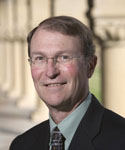
Franklin M. Orr, Jr.
Director
Precourt Institute for Energy
Professor
Energy Resources Engineering Department, Stanford University
Franklin M. (“Lynn”) Orr, Jr. became the director of the Precourt Institute for Energy at Stanford University upon its establishment in 2009. He served as director of the Global Climate and Energy Project from 2002 to 2008. Orr was the Chester Naramore Dean of the School of Earth Sciences at Stanford University from 1994 to 2002 and has been a member of the Stanford faculty since 1985. His research activities focus on how complex fluid mixtures flow in the porous rocks in the Earth’s crust, the design of gas injection processes for enhanced oil recovery, and CO2 storage in subsurface formations. Orr received his B.S. in Chemical Engineering from Stanford University in 1969 and his Ph.D. in Chemical Engineering from the University of Minnesota in 1976. Orr was elected to the National Academy of Engineering in 2000. He is a member of the board of directors of the Monterey Bay Aquarium Research Institute, and he chairs the Science Advisory Committee for the David and Lucile Packard Foundation and was a foundation board member from 1999-2008.
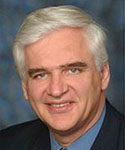
Fritz B. Prinz
Chair
Department of Mechanical Engineering, Stanford University
In addition to his positions in the department of mechanical engineering, Fritz B. Prinz is also the Rodney H. Adams Professor in the School of Engineering, a Professor of Materials Science and Engineering, and the Director of the Rapid Prototyping Laboratory for Energy and Biology at Stanford University. He obtained his Ph.D. in Physics at the University of Vienna, Austria. Prinz's current work focuses on the design and fabrication of micro- and nanoscale devices for energy and biology. Examples include fuel cells and bioreactors. He is interested in mass transport phenomena across thin membranes such as oxide films and lipid bi-layers. His research group studies electro-chemical phenomena with the help of Atomic Force Microscopy, Impedance Spectroscopy, and Quantum Modeling.
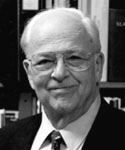
Burton Richter
Paul Piggott Professor in the Physical Sciences
Stanford University
Director Emeritus
SLAC National Accelerator Laboratory
Burton Richter received his B.S. and Ph.D. from the Massachusetts Institute of Technology in 1952 and 1956, respectively. He began as a post doc at Stanford University in 1956, became a professor in 1967, and was Director of the Stanford Linear Accelerator Center (now SLAC National Accelerator Laboratory) from 1984 through 1999. His research has centered on experimental particle physics with high-energy electrons and electron-positron colliding beams. Richter received the Nobel Prize in Physics (1976) and the E. O. Lawrence Medal of the Department of Energy (1976). He is a member of the National Academy of Sciences and the American Philosophical Society; a Fellow of the American Academy of Arts and Sciences, of the American Association for the Advancement of Science, and of the American Physical Society (President, 1994). He was President of the International Union of Pure and Applied Physics (1999-2002). He has served on many advisory committees to governments, laboratories and universities. He currently is a member of the Department of Energy’s Secretary of Energy Advisory Board, Laboratory Operations Board, Nuclear Energy Task Force, and chairs the Transmutation Subcommittee of the Nuclear Energy Research Advisory Committee. He is a member of the French Commissaire a l‘Energie Atomique (CEA) Visiting Group. He is also a member of the Jason Group, and chairs the National Research Council’s Board on Physics and Astronomy. He is interested in industry and its use of science and technology and has been a member of the General Motors Science Advisory Committee, chairman of the technology advisory board of an artificial intelligence company, and has been a member of the Board of Directors of Varian Associates and Varian Medical Systems, and is a member of the Boards of Litel Instruments, ASTRA, and of AREVA Enterprises, Inc.
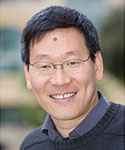
Zhi-Xun Shen
Director
Stanford Institute for Materials & Energy Science
Paul Pigott Professor of Physical Sciences
Departments of Physics and Applied Physics, Stanford University,
and Photon Science, SLAC National Accelerator Laboratory
Zhi-Xun Shen is currently the Director of the Stanford Institute for Materials and Energy Science (SIMES). Shen has been a Professor of Physics, Applied Physics, and SLAC National Accelerator Laboratory Photon Science since 2000, an Associate Professor (1996-2000), and Assistant Professor (1992-1996). His main research interest lies in the area of condensed matter and materials physics. Shen’s awards include: Sloan Research Fellow (1993); Materials Science Research Award for Outstanding Scientific Accomplishment in Solid State Physics, Office of Basic Energy Science, Department of Energy (1994); American Physical Society Centennial Lecture (1999); Kammerlingh Onnes Prize (2000); The Takeda Foundation Techno-Entrepreneurship Award (2002); American Physical Society Fellow (2002); and the Paul Pigott Professorship in Physical Sciences (2006).
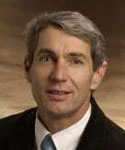
Kevin Tomsovic
Professor and Head
Electrical Engineering and Computer Science Department, University of Tennessee
Currently, Tomsovic is the CTI Professor and Head of the Electrical Engineering and Computer Science Department at the University of Tennessee, Knoxville. He received a B.S. degree in electrical engineering from Michigan Technological University, Houghton, in 1982, and M.S. and Ph.D. degrees in electrical engineering from the University of Washington, Seattle, in 1984 and 1987, respectively. Visiting university positions have included Boston University, Boston, MA; National Cheng Kung University, Tainan, Taiwan, R.O.C.; National Sun Yat-Sen University, Kaohsiung, Taiwan, R.O.C.; and the Royal Institute of Technology, Stockholm, Sweden. He was on the faculty of Washington State University from 1992-2008. He held the Advanced Technology for Electrical Energy Chair at Kumamoto University, Kumamoto, Japan, from 1999 to 2000 and was an NSF program director in the ECS division from 2004 to 2006.
















